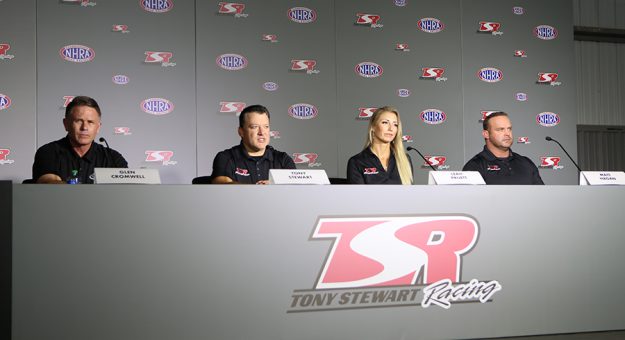SNOHOMISH, Wash. — Brilliant baseball writer Robert Lipsyte said in an article years ago that America’s Pastime was a dying game and that its “genius” was that “It has so far survived the swine who own it, the clods who manage it, the thugs who play it, and amazingly, the Lost Boys of Literature who have tried to love it to death.”
Swine, clods and thugs are labels way too harsh for the NHRA regulators and participants, although many have feared the sport is fading, too. In the 1960s and early ’70s, drag racing was popular, right up there with prizefighting and horse racing. It had at least a sizeable cult following.
And the guardians of drag-racing history are just as guilty, if “guilty” is an appropriate word, of romanticizing what goes on at drag strips, with two drivers, two cars, two lanes and one trophy. But that has a harmless sweetness to it, the legends and lore of a sport that sounds so simple but is so complex.
The challenges drag racing faces, to some degree, are ones the stakeholders neither caused nor can control. The rising cost of racing is due primarily to the escalating price of fuel, hotel rooms, rental cars and airline fares. Aside from travel expenses, the sport has two other major issues: promotions and the simple fact its 70-year-old business model is upside down.
“There’s not much about it that makes sense, when you really analyze it,” Top Fuel owner-driver Josh Hart said. “Could you imagine if Tom Brady paid to show up and throw the football? It’s a strange situation, that’s for sure.”
Hart, who has doubled down on his investment in the sport with a second Top Fuel operation and a new Factory Stock Challenger Drag-Pak entry, is right. And NHRA President Glen Cromwell has acknowledged it, figuring a Harvard Business School representative would study the NHRA and scratch his head at its sustainability. But it works.
Call it addiction. Call it passion. Call it love for the sport or need for speed.
The sport is spectacular, in the true sense of the word. Cars launch from the starting line with the thrust of the Space Shuttle and hurtle 1,000 feet in less than four seconds. They vaporize rubber. Nothing else on the planet comes close in extreme.
It has diversity that’s unmatched in any sport worldwide. It has personal drama — some driver always is miffed at somebody else, some drivers are apt to say memorable things and some are the tough and silent types, and everybody pitches in to help each other.
Although they try to be polite at the top end of the track after a loss, like a rather prissy colonial gent dancing the minuet, they can get snarky or candid when they choose to. The cars can blow up. When at the starting line the Christmas Tree lights flash from amber to green, signaling it’s time to go — anything can happen.
Through all the dangers and challenges on and off the track, racers are optimistic for the new season.
“This sport is in good hands and we’re all going to be building on it,” two-time and newly crowned Funny Car champion Ron Capps said.
He had asked the question toward the end of this past season: “I think through COVID, our sport did better than most … but where is it going? Where is the new generation of ownership?”
He’s part of it, with his announcement in early December that he would field his own Funny Car team. Don Schumacher Racing, which once ruled the pits with seven teams, has essentially been dismantled with Antron Brown’s breakaway as an independent team owner and the departures of Leah Pruett and Matt Hagan to the new Tony Stewart Racing operation and Capps to his own venture.
Tony Schumacher will fly the family banner in his return to the track. Megateams aren’t the rage anymore, although John Force still reigns over a four-driver effort and Connie Kalitta still fields his three cars.
Hart proved during his rookie season that he knows how to introduce marketing partners to NHRA drag racing. The same goes for Justin Ashley, who is entering his third season and already is a major part in the marketing engine. Krista Baldwin is taking the reins of the team she and her grandfather Chris Karamesines owned jointly. No one has any doubts about Brown’s ability to lead and eventually expand his new team.
And Brandon Welch, following in the footsteps of his late grandfather Chuck Beal, continues to bolster his on-track performance and business acumen in the sport.
“I do feel a kinship with guys like Josh Hart. He’s my age and he’s built big, successful businesses, and he’s figuring it out and doing it and the car is running amazing,” Welch said. “And how great is it to know you can have a one-car team, and you can throw a reasonable amount of money at it and you can be very competitive? Justin Ashley’s building a team and Cameron Ferre; he’s out there hustling and putting deals together and he leases a seat. All these guys are pursuing it.
“Top Fuel racing just has its own gravity. My bug came from my grandfather. I grew up with it, and it’s as much a part of the family culture as any other family tradition is for anybody. If you’ve got a little bit of that bug in you, it’s going pull you in and you’re going to find a way to participate.”
